Last Updated on June 20, 2024 by Michelle
Our old farmhouse had dilapidated wide plank flooring that was worth saving; those boards embody history you can feel in your toes. So one New England summer I was on a mission.
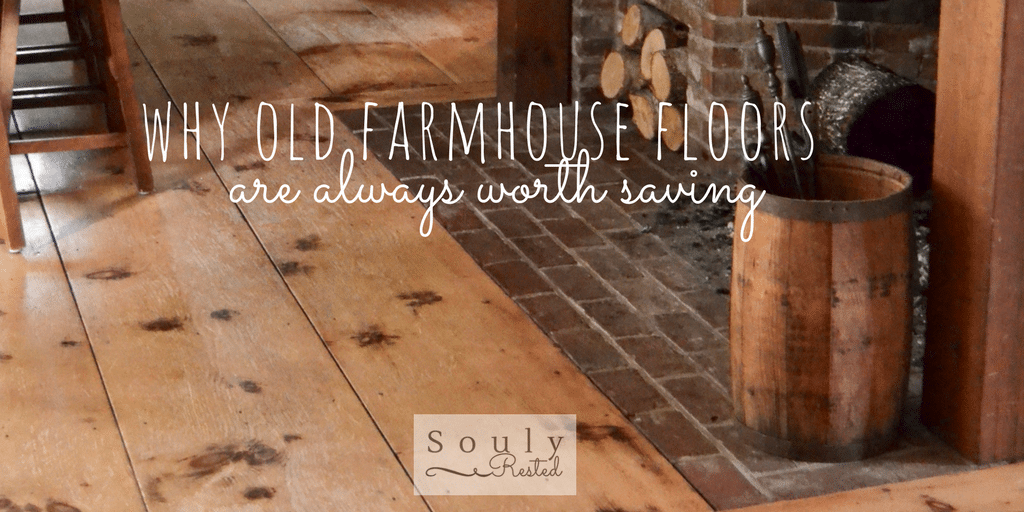
It had been six long weeks. Three of research: internet, calls, emails. Three of sharpening and scraping: inch by inch, board by board. Read more–the beginning of the story–here.
She helped me with devoted zeal and did more work than I… the daughter who always stares big jobs in the face, non-perplexed, and works till they’re done. The daughter who always respected history, even though science and math are her passions.
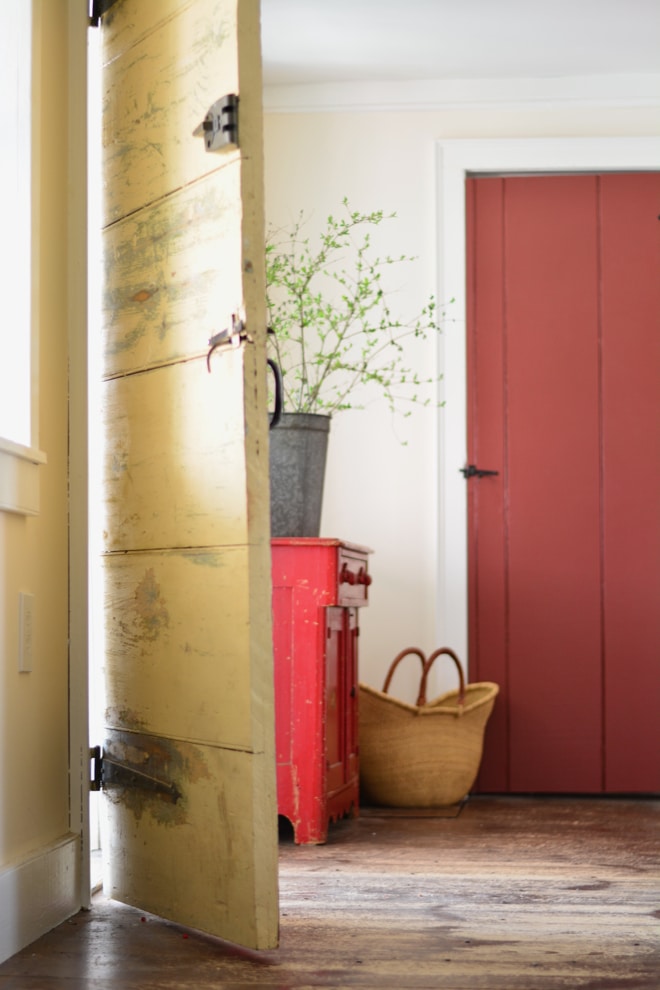
She did the math on this one, and the mechanical engineer convinced me, after three weeks of back-breaking hand scraping, it was time to bring in some help. Some mechanical advantage. (She was thinking we needed an orbital sander, like this one.) After all, there were no hand hewn marks left to preserve on over half of the wide plank floorboards. They had been trod for years, with no protection.
On that half of the room, we would use a hand sander and cut our efforts and time of labor to probably a fourth of the amount.

I Didn’t Want Modern Technology Harming Our Old Wide Plank Floors
She couldn’t convince me to allow her modern technology to take over all the old farmhouse floors.
In this northern land of preserved history, where you often turn many a mountain bend and see a Cape Cod like ours greeting you with its symmetrical simplicity and high pitched roof, there were many people I could talk to about preserving our old floor.
To some, it was too common. Not respected enough.
Many flooring experts with thick, lazy drawn out “r”s were eager to help my “flah-bahds” by bringing out their big drum sanders to perfect and modernize my floor. Quickly scrape away multiple layers of uneven, hand hewn uniqueness to each board, leaving me with a floor like I could probably buy at Home Depot. They didn’t pause to offer any amazement at my floor’s endurance, how she had weathered two centuries of wear and yet was still strong under her scars.
But I was determined that this one Cape Cod, the one that sprawls out where the lake meets the river, the one that tucks behind the maples at the bend in the road, it would not have a modern floor.
I Was Almost Convinced
Yet there were experts who did respect the age and character of my weary farmhouse’s wide pine floor boards. And they were gently honest with me. These men conversed with me me at the barn dance.
Or we chatted beside the home baked whoopee pies for sale in the country store.
They coached me. These men, local builders or carpenters, had themselves spent countless hours and exerted extreme efforts on their knees over antique pine boards. They tenderheartedly pointed out that my method was still scraping away the original hand hewn marks.
These men, like me, were lovers of history that one can walk barefoot across, lovers of history that one can literally feel in ones toes, and they all kindheartedly told me, over the course of back-breaking, discouraging weeks, that my methods were not truly preserving the history. Adding a little mechanical advantage was not only okay, they assured me, but also might save my sanity.
I listened but wasn’t ready to give up yet. It became a battle of me and these old floorboards against the world.
Then I Gave Up
Then the day came. I collapsed. I flung back and sprawled out across the scraped, dusty pine like a child ready to make an angel imprint in the snow. There, looking up at my low, wood beamed ceiling, I gave up.
I simply had no energy left in me to continue my plight. Looking at the minuscule ground my daughter and I had scraped away at over the course of almost four weeks, looking at the rough (I had to admit) ugly results of my efforts, and looking at the smooth efforts of her hand sander, I realized I had been wrong.
Here in the boards that had been rather easily sanded (on the right) I saw more proof of the hand hewn marks made 214 years ago than I did in my ridiculous efforts.The stain had penetrated darker into the deeper hewn areas and it would always be darker. Always bear testimony to the hard, almost forgotten labor of the pit saw crew . I couldn’t feel the dips any longer, but I could see them. In the boards we had scraped (on the left), we lost both the feel and the sight of those marks. So I gave up, but did so gladly.
The next morning I started investigating vibratory sanders. Beside the General Store’s whoopee pies and over strains of barn dance music, I had been assured by the kindhearted experts that vibratory sanders were much gentler than drum sanders and they would enable me to preserve my floors with tenderness. I was ready to try.
Turned out, I could rent a vibratory sander that measured 12″ x 17.” Perfect for my wide plank patriotic floorboards, rebellious by their very nature.
Their width was, afterall, illegal when New England was subject to the British crown. The king declared all large pines were for British naval masts. But this post explains more.
Why I Used an Orbital Sander on Our Old Wide Plank Flooring
I could sand them individually, without smoothing out their unique, hand-hewn edges. I thought it’d be two days, one for sanding and one for applying top coat, and I’d be done. That was a week and three days ago. Granted, she was right (my engineer), adding mechanical advantage made the job much more manageable, but let’s just admit it right here, right now:
The words “easy” and “antique floor refinishing” can never be uttered in sentences of even close proximity.
Yet, most definitely “rewarding” and “beautiful” and “worth the effort” may all be belted out boldly in the same flooring discussion.
The most amazing fact about my patriotic floorboards? They were officially given new life on the very day that celebrates independence.
A voluminous dose of 24 hours worth of rainstorms canceled our small town’s Independence Day parade and fireworks display but led to a true revival worthy of celebration in the little Cape Cod tucked behind the maples at the bend in the road.
How Our Wide Plank Floors Look Today
They’re still in need of a light sanding, another good cleaning, and multiple more top coats, with an all-natural coating made from–believe it or not–cheese whey. Read more about that here. But boy when they’re done, I’ll be hosting a one-person parade on these patriotic floorboards. Followed by barefoot dancing. (It’ll be a two-person parade and dance if I can convince the engineer to prance and promenade with me.)
For one evening though, I put down my sandpaper and knee pads. I reveled in the rain-date firework display celebrating true American strength, persistence, and endurance. In fact, surely I enjoyed the breathtaking symbols of American steadfast determination even more than I would have before I became a liberator of beautiful patriotic floors.
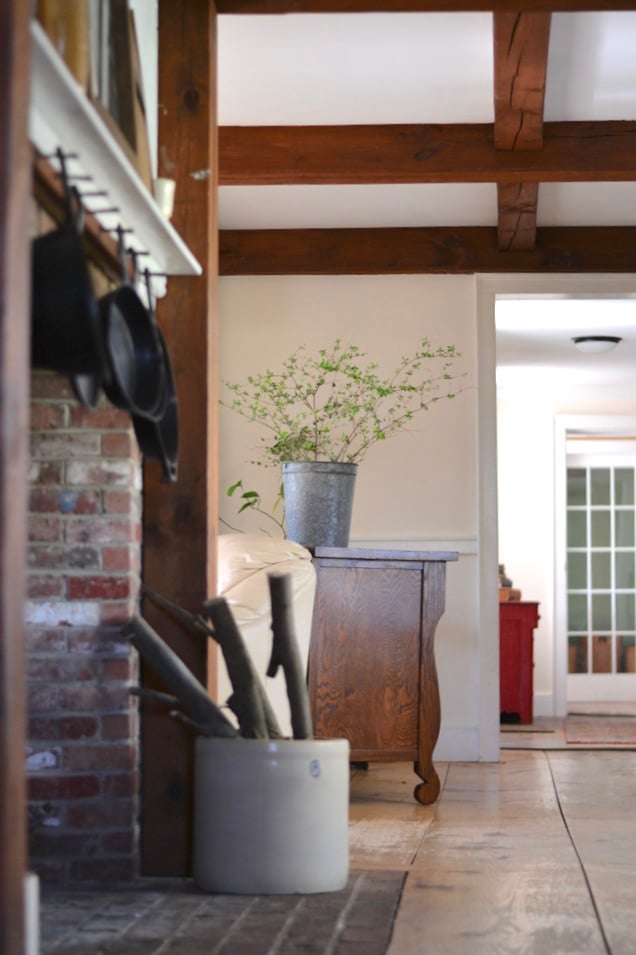
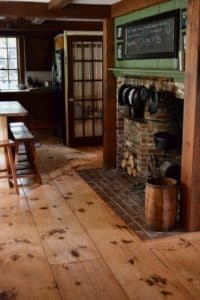
More Details About our Old New England Farmhouse:
More about antique wide-plank pine floors
What I learned by refinishing old floors the hard way
Why we moved from suburbia to this old farmhouse.
3 Secrets Old Farmhouse Owners Won’t Tell You
Talk to me!
If you have any questions, leave a comment below. And please tag me on ig to show me your farmhouse details @souly.rested.
Pin this for later!
Click on the image below to pin this post.
Find out why SoulyRested was considered to be one of the Top 20 Must-Read Homesteading Blogs of 2018 and then one of the Top Homesteading Blogs of 2019 as well.
I’d love to connect!
To find me in some other neck of the woods, just click any (or every!) icon below:
And Then There’s THIS From My Farmhouse Kitchen–>
Sign up for my weekly-ish encouragement in your inbox and I have some of my favorite recipes waiting for you to download instantly. It will take you one hot second and those recipes will be on their way to you… Just type in your email right here –>
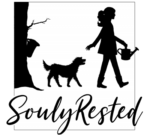
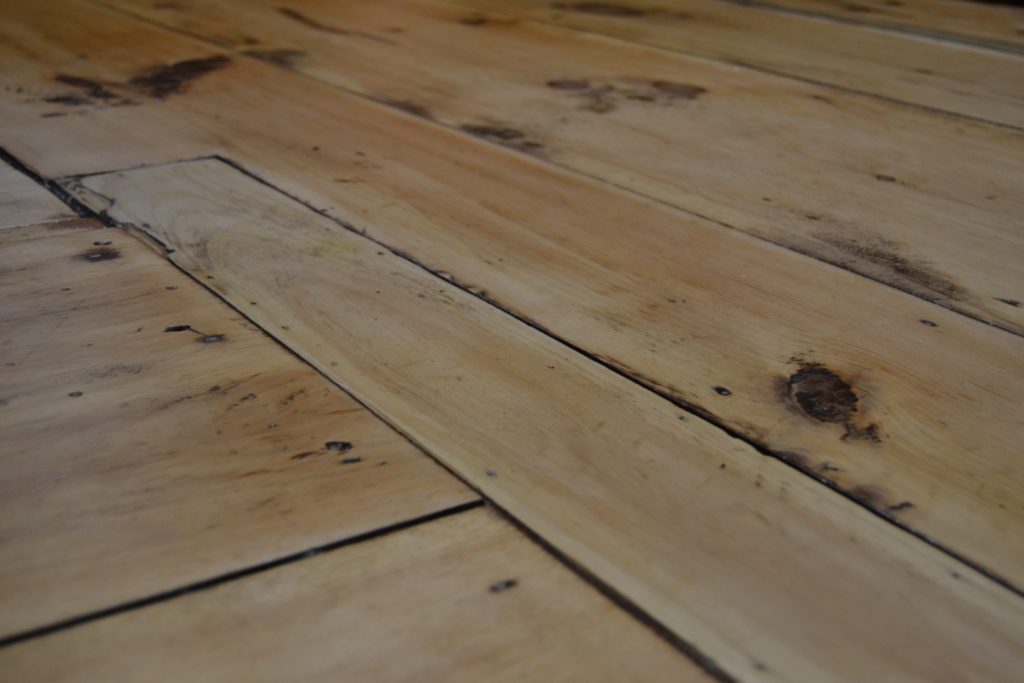






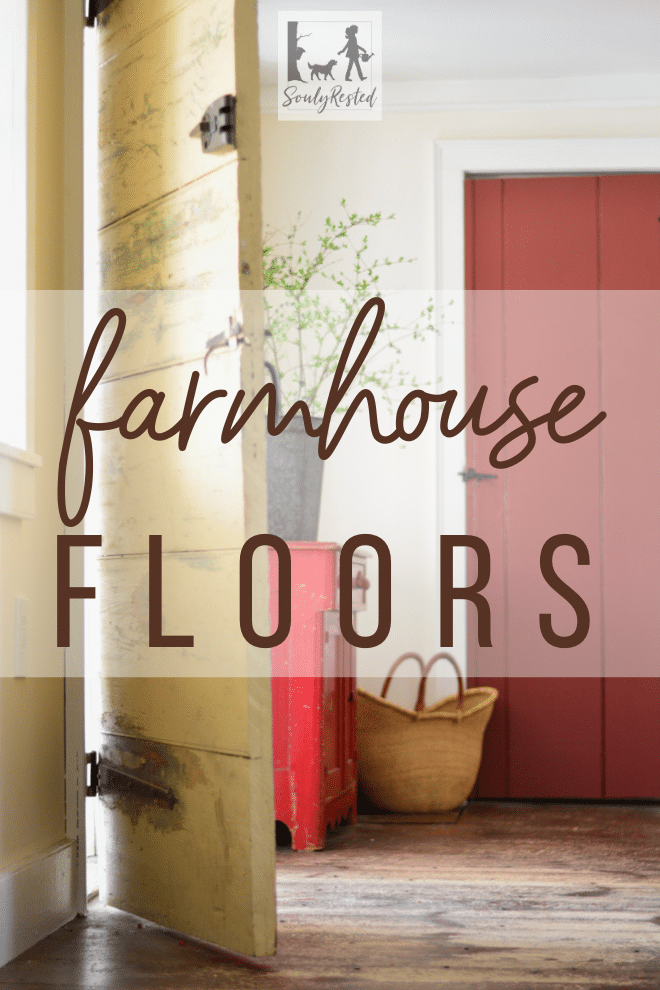





What a happy dance it will be!
It is beautiful! We have old floors that are wearing down in places that some day may get refinished. But for now, I love the “Character” that they add. They say “somebody has lived here.” “Somebody loved me.” I love that your floorboards were once “illegal”…what a neat little bit of information 🙂 As for the person who pinned it to their “dream home” board, I don’t blame them! It’s beautiful, even if it’s imperfect! I always loved the movie “It’s a Wonderful Life” and how much time Mary spent fixing up the house and how much George loved/hated that knob on the railing that came off every time he walked past. It’s the love and the character that these old houses have that make them dream homes 🙂
Hi! We are having trouble figuring out what you mean by a “vibrating sander.” Can you explain? Thanks so much!
I wasn’t calling it the correct name 🙂 I just corrected it to read “orbital” sander and included a link above… https://amzn.to/3vuHZjn
Michelle……….just now found you…… you ROCK.
I told my parents when I was 4 that I wanted to live in a Cape Cod with an old barn. Still waiting for that.
And finally…….Long live Olde Wide Plank Wood Flooring. Totally worth saving!!
Peace!
Amen! (And I hope you some day “get” your cape and barn. 🙂 )
So we have an old 1830s Greek Revival in Vermont that we have lived in for 26 years. Just got the bad news that the FHA would not give us a refi without refinishing the floors! My husband and I are in our 70s and really not up for the task. I was told they were hemlock and called “scrub board” and were never meant to be coated. How did you get all the dirt out of the cracks between the boards? The main issue is that we have nowhere to put the furniture while we do anything with the floors. Any insights you might have would be most welcome.